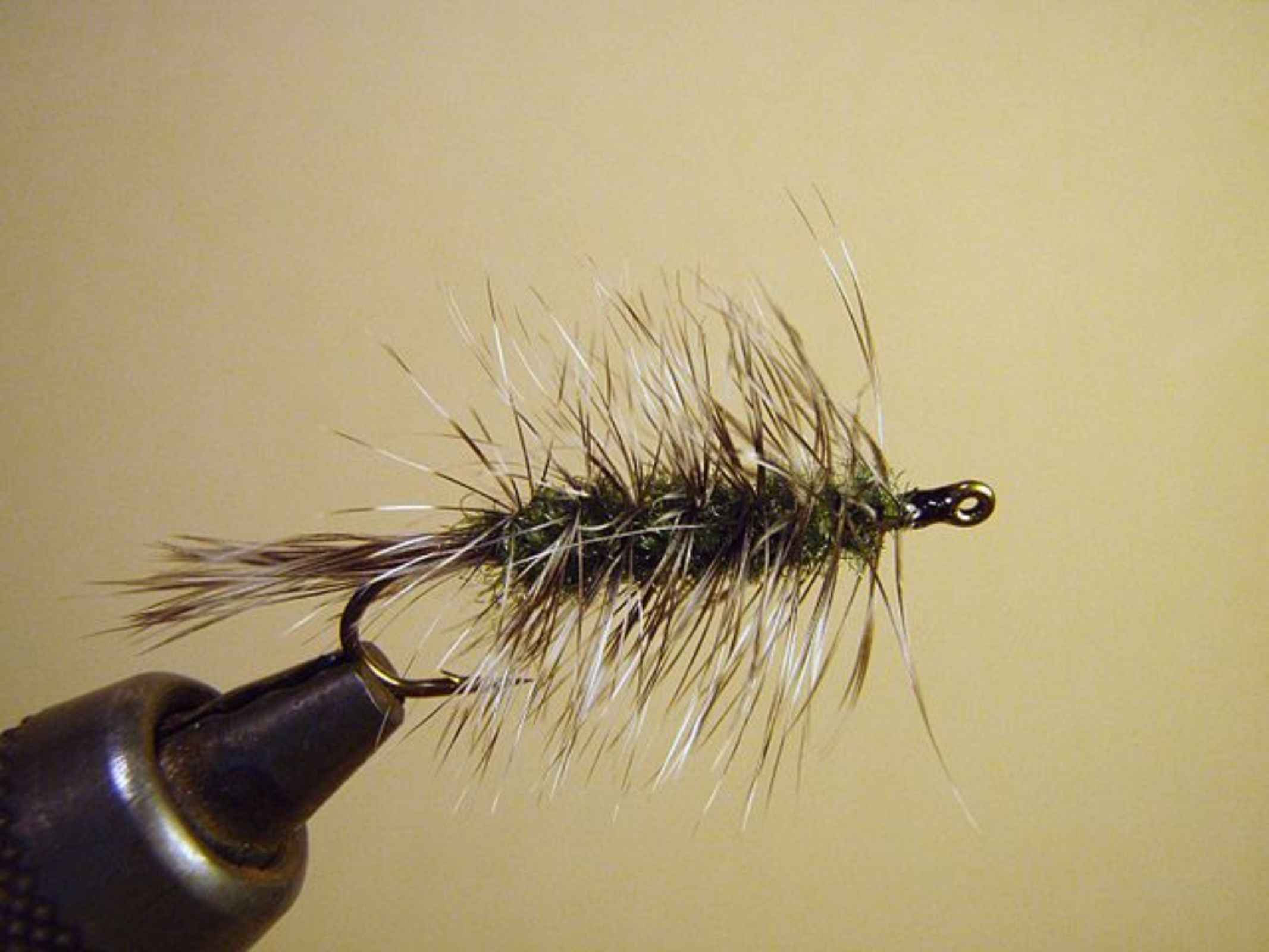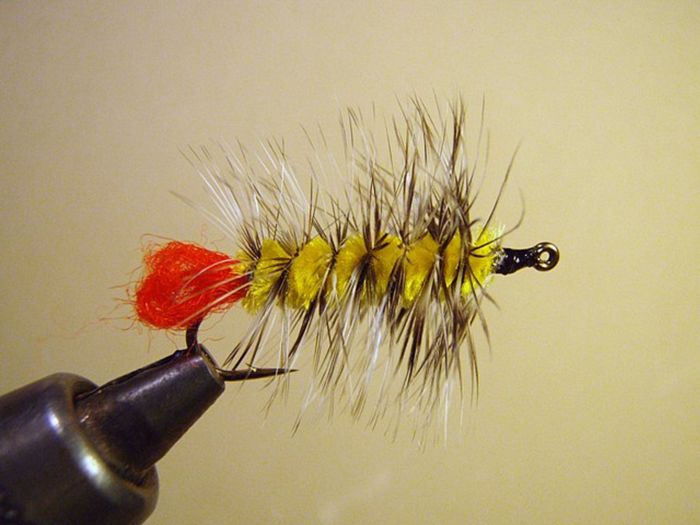The Wooly Worm - Fly Fisher's Patterns
The Wooly Worm is a historic fly that's known for countless variations. Read on to discover more about this popular fly.

The Wooly Worm’s actual origins are still debated, and this has added a mythic charm to this otherwise unattractive fly. Records of flies with a similar design have been appearing since the early 1500s and were first described in “The Compleat Angler” by Izaak Walton in 1653 with the name of Wooly Bear. Its pattern was described to imitate a caterpillar, with black and yellow thread, black chenille, and white hackle. In the 1920s, this design made its way to the Ozarks of Missouri and Arkansas and was used as a smallmouth bass fly.

What is the Wooly Worm?
The Wooly Worm is commonly grouped with other wet flies or nymphs. It’s a versatile pattern used under the surface of lakes, streams, rivers, and ponds. Its design mimics large aquatic nymphs such as stoneflies, dragonflies, damselflies, riffle beetle larvae, or hellgrammites. This fly is popular for the simplicity of its pattern, fly-tying ease, and its efficiency with various species of freshwater fish. Although usually used to hook trout, it’s effective in catching bass, bluegill, pike, and crappie as well.
In the 1930s, a fly-fisherman from West Yellowstone named Dan Martinez came across the Arkansas design and created his version of the patterns. He sold them commercially and called the flies Wooly Worms. Martinez’s design is commonly considered the original, which consisted of a black body made of chenille with a Grizzly hackle spun around it. His method of tying pointed the fibers toward the front so that they would oscillate when retrieved.

The Classic
The Wooly Worm’s original design has undergone various changes throughout its long history due to the simplicity of its design. It’s easy to tie from scratch and its generic build allows virtually any color combination and substitution of materials.
With so many variations of the core ingredients, it’s easy to forget what a Wooly Worm is. It has three main elements in its neo-classic form: a red tail, chenille body, and palmered grizzly hackle.
The original Wooly Worm had no tail, and this was added when it evolved to target trout and has somehow become an identifying feature. Larval caddisflies have a case that protects them, and the red tail on the Wooly Worm mimics the head jutting out from the casing. The tail is usually red wool, floss, or yarn.
One important characteristic of the Wooly Worm is the reverse palmer hackle spun over the chenille body. This feature provides added resistance when retrieving it through the water and keeps it safe from snagging on vegetation or other structures if fishing close to the riverbank. The palmered hackle imitates natural movement and causes vibrations in the water, attracting predatory species. The Wooly Worm is usually black, dark olive, brown or yellow and the hackle is palmered from tip to tail.
Truth or Fly
Some fly-fishing purists will never touch a Wooly Worm because the technique to use this fly is more like bait fishing than casting. Some seasoned anglers shy away from this fly because there’s no finesse, grace, or skill needed when using it. It’s so effective that it’s been regarded as too easy to use and has even been constituted as cheating. To top it all off, the Wooly Worm is even easy to tie.
With all these positive qualities, the Wooly Worm is almost the perfect fly. The only thing it doesn’t have going for it is its aesthetic quality (at least to the average person). One reason that so many variations of the Wooly Worm exist is perhaps to try and enhance a fly that, for lack of a better word, is ugly.
No matter which style you craft your Wooly Worm, it’s a flexible fly. It can be crafted with Estaz or Crystal Chenille to increase its attraction. Chenille is sometimes swapped with mohair to enhance its bug-like appearance. Brighter colors and diverse shades are substituted for their original dull and dark hues. Different types and lengths of hackle are used to help the fibers angle backward. Others substitute or add marabou or mohair to the chenille body to give it added realism. Lining the fly with non-lead wire before attaching any materials is a common variation that helps to add weight.

Other new tying techniques include changing the reverse palmer hackle with a hackle-first tie. In this method, the chenille is attached first, followed by palmering the hook’s shank with the hackle. The chenille is then wrapped over the hackle, letting the fibers jut out through the wraps. Others even add a peacock herl shellback over the chenille afterward.
To list down all the alterations of the Wooly Worm is futile. Simply put, the possible variations are endless.
Wooly To Stay
One thing that anglers can count on is that the Wooly Worm will continue to evolve as long as the fish keep biting. It’s been around for hundreds of years for a reason, and will probably be around for hundreds more. As new materials are invented and new environments are tested, the Wooly Worm is a true classic fly that deserves a spot in your tackle.



